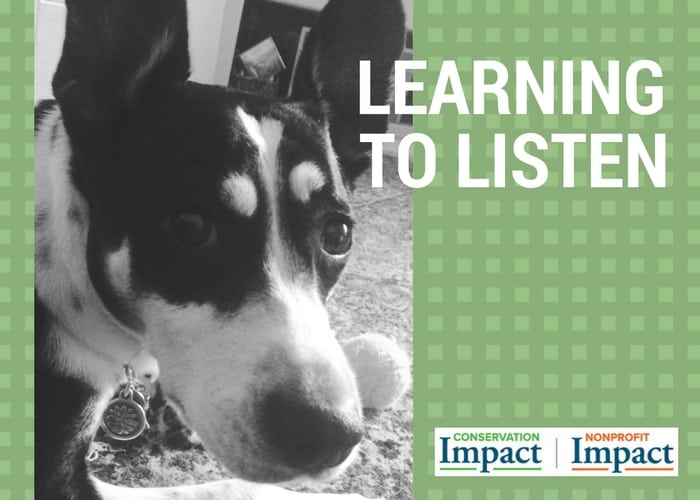
Learning to Listen
Regardless of the kind of project or type of organization we work with, our clients usually want more of something from someone:
- More new donors, members, or funders
- More engagement from the board of directors or advisory council members
- More follow-through from partners, collaborators, or coalition members
You get the idea.
Now, there’s nothing wrong with wanting more for your organization.
But you are much more likely to get what you need if you can put yourself in the other person’s shoes and really understand their needs or interested relative to your cause. One of my favorite tools to help clients gain this understanding is the listening assignment.
A listening assignment is just what it sounds like – an assignment that requires you to listen for input on a specific topic. First, recruit a few “listeners” to help. These can be staff members, board members, or volunteers. Listeners must agree to have a discussion about the chosen topic with a certain number of individuals from a specific group by a set deadline.
Then, make the assignment specific. For example, imagine a healthy communities coalition wants other community-based organizations to become more involved in promoting their healthy eating and active living best practices. Their listening assignment might look like this:
- Listeners: coalition and staff members (N=18)
- Who: staff and board members from community-based organizations in the local community
- When: each month for the next three months
- How much: three conversations/ month (9 total/ listener (x 18 = 162 conversations))
- Why (learning objective): to better understand the needs and interests of community-based organizations relative to improving healthy eating/ active living habits in our community
- What (suggested questions):
- What are the biggest issues facing the community members your organization serves?
- What progress do you hope to make in the next 5 years?
- What is your need/ interest in seeing the health of our community improve?
- What obstacles or challenges most get in your way of achieving that?
- Where do you turn for community development information and advice?
The listening assignment culminates with sharing and analyzing the information gathered. Ask each listener to make notes of their conversations and then have them submit their written notes, report out at a meeting, or attend a debriefing session. Designate a specific person or small team to analyze all the information – what does it all mean and what does it tell us about what we should do differently?
In the example above, the organization might learn that while the community-based organizations like the idea of improved community health, they did not think the people that their individual organization served have any health issues. The healthy communities coalition can then use that information to adapt its messaging – changing from promoting specific best practices to communicating the public health data that demonstrates the need for improved nutrition and physical activity in the community.
The thing to remember is that the person or institution your organization wants more from may or may not care about your cause. And if they do care, chances are good they care for reasons that are a little different than the reasons you care. Get in their shoes, see your issue from their perspective. That’s how you’ll find the connection you’re looking for.

